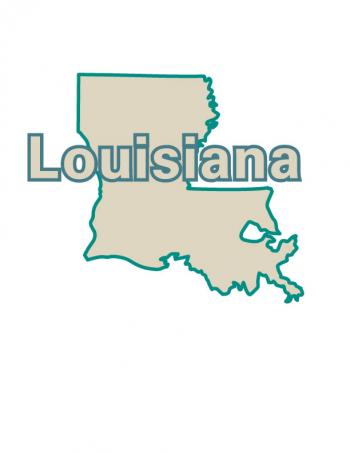
Jim Bradshaw: Summertime blues bring back memories of crabbing trips
Traveling along any highway in coastal Louisiana, you are almost certain to be accompanied by a drainage channel, canal, or bayou on at least one side of the road. From time-to-time, creosote-timbered bridges and walkways span these little waterways, opening the way to rutted trails winding back into the marsh.
If you stop and examine these bridges, you’ll find hundreds of pieces of twine tied to them, apparently the remnants of some giant spider’s web.
You’ll notice the same thing as you walk out onto the piers and wharves pushing into our brackish lakes and bays. If someone did a study on it, they could probably tell you how old these wharves and bridges are by the string remnant count.
The string is there because blue crabs are in these waters, and of all the things overflowing nature’s cornucopia in Acadiana, there may be nothing more delectable.
Crabbing is best in south Louisiana from June to September, when the blues migrate from the Gulf of Mexico to shallow inland waters. Dozens of other crab species come with them, but only the blue crab, Callinectes sapdius, is commercially important and easily caught. You will find them in both fresh and salty lakes, bays, tidal bayous, and especially in the shallow estuaries of the Gulf.
You can catch them lots of ways. Bait is no problem; they will eat anything resembling meat. Fish heads, chicken or turkey necks, or similar baits will do just fine. I once caught a crab on the tongue of an old tennis shoe.
The simplest way to crab is to tie the bait to a piece of cord long enough to reach the bottom and plunk it in the water. That’s all there is to it. If the meat floats, put a little weight on the line.
When a crab takes the bait, he will try to crawl off with it, stretching the line tight. When that happens, you just pull it up gently, scoop it from the water with your dip net, and plop it into an ice chest or hamper.
When I was younger, outings to the crabbing grounds were an occasion for the whole family: Mama in a folding chair, directing operations from beneath a big straw sun hat; Pop going from line to line with dip net in hand; the kids, still damp from “accidentally” falling in the water, follow close on Pop’s heels as he pulls in the lines.
Once a few crabs were caught, the kids usually gave up line-pulling and gathered around the hamper, poking long stems of marsh grass to make the crabs lash out with their long pincers. Crabs use these large, strong claws to capture and hold food, as well as for defense.
They also have four other pairs of legs. The middle three pairs are walking legs; the last set is for swimming. All of the legs are lined with the blue color that gives the crab its common name. Some of the crabs may be a foot wide, not counting the legs; 5- to 6-inch crabs are common.
When it comes to eating hard shelled crabs, there aren’t many ways better than the traditional Louisiana crab boil. The crabs are placed in boiling water laden with spicy seasonings, salt, and lemons. When the crabs have been thoroughly boiled — they turn a bright red — they are pulled from the pot and set to cool.
Then it’s time to sit back, pick the meat, and reap the rewards of a day’s play.
You can contact Jim Bradshaw at jimbradshaw4321@gmail.com or P.O. Box 1121, Washington LA 70589.
- Log in to post comments
